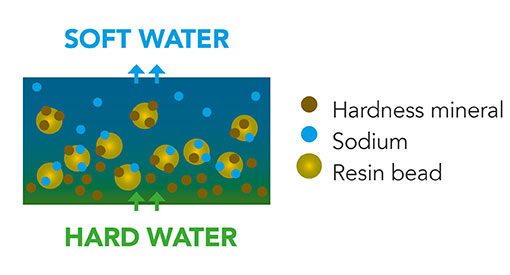How a water softener works
Water softeners use a process called ‘ion exchange’ to remove the calcium and magnesium minerals from your water as it enters your home.
As the hard water passes through a tank filled with tiny food grade resin beads, the calcium and magnesium minerals stick to the resin particles and the water is ‘softened’. Once the tank is full of calcium and magnesium minerals it is cleaned with a brine solution which is flushed down the drain – it does not enter your water supply. The resin beads are then rinsed with soft water to ensure there are no traces of salt. The water softener is now ready to continue softening your hard water.

Twin-tank design
An Infinity T4 water softener has two cylinders to soften your hard water. Once a cylinder is full of calcium and magnesium minerals it starts to regenerate and the water softener valve switches immediately to the second cylinder and continues to soften the water. A ‘twin cylinder’ water softener is the only system which guarantees soft water all day, every day.
A single cylinder water softener cannot produce softened water during the regeneration (cleaning) process because the system shuts down. If you turn on your water supply during regeneration it bypasses the water softener, and you will get hard water. That is why two cylinders are always better than one.

